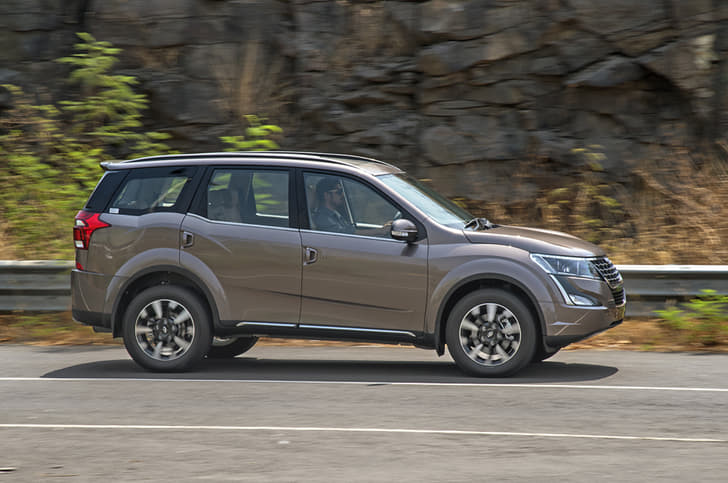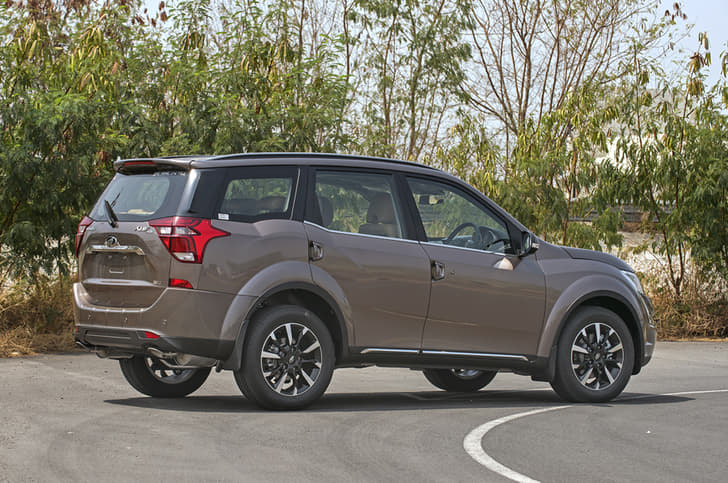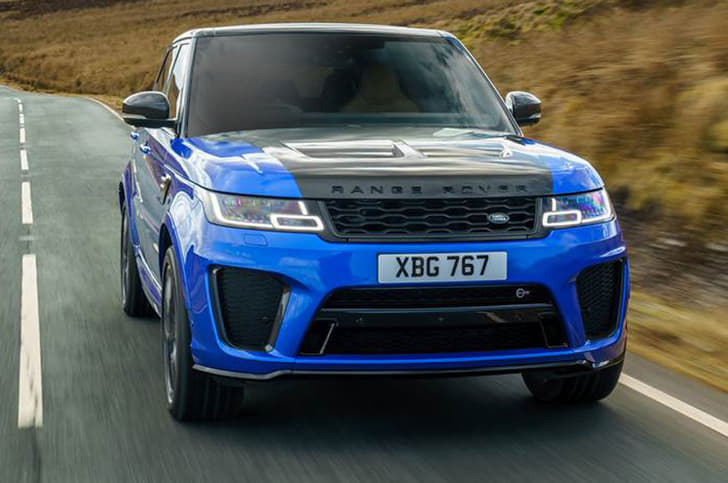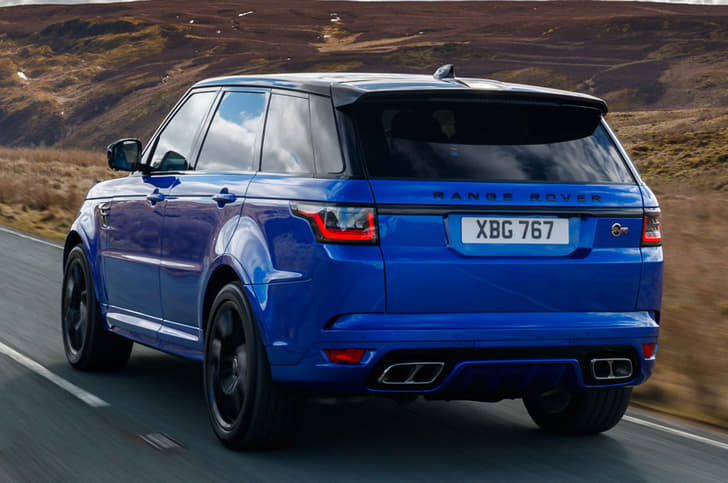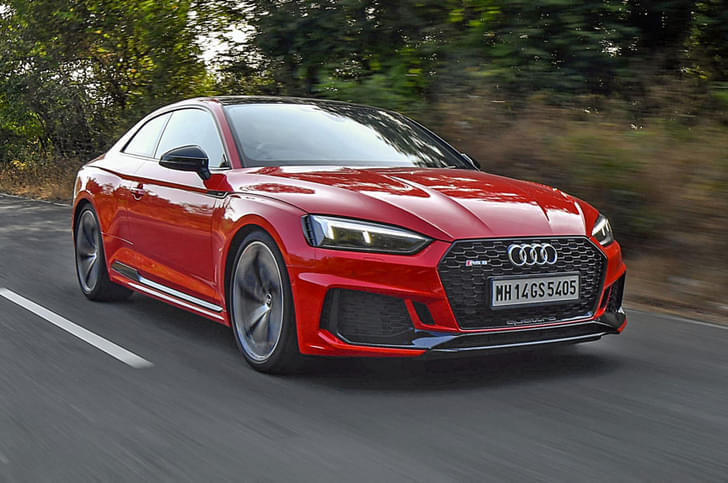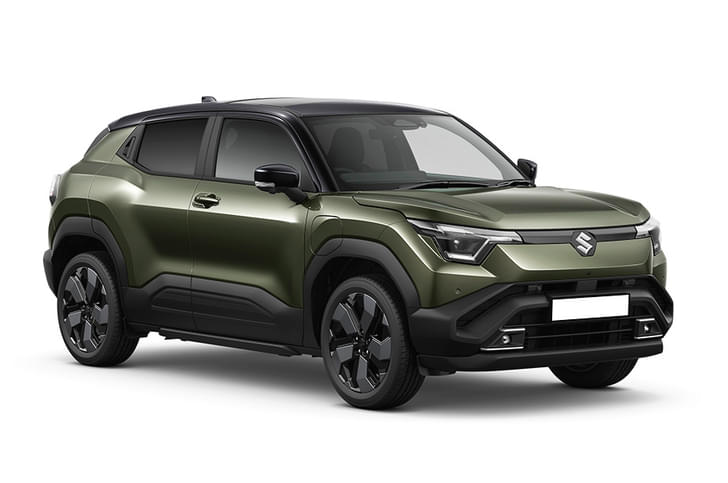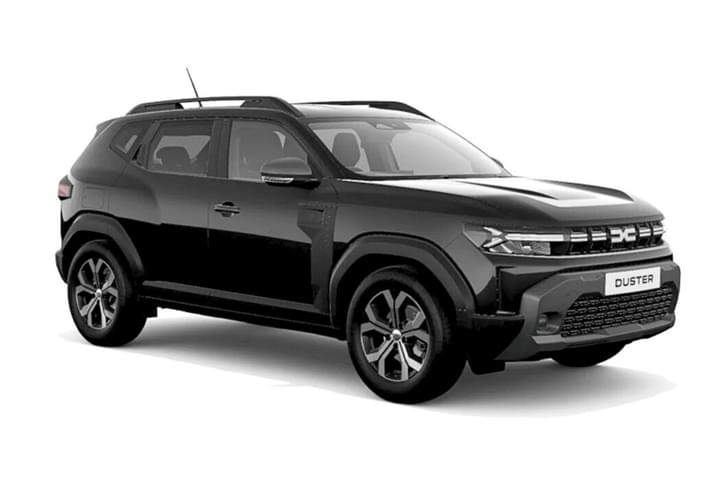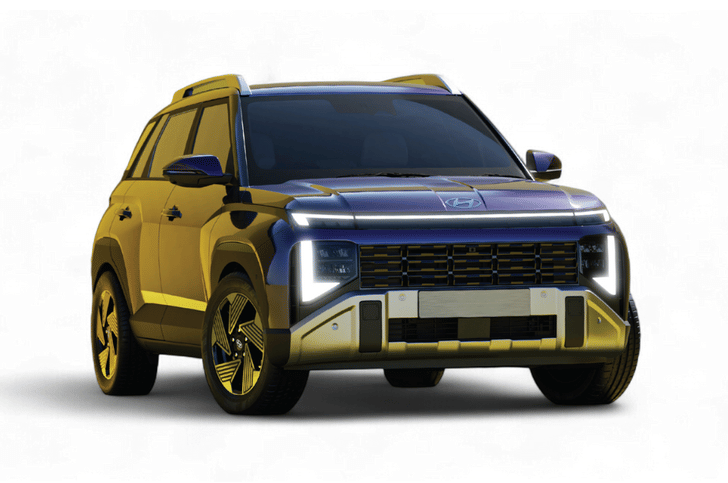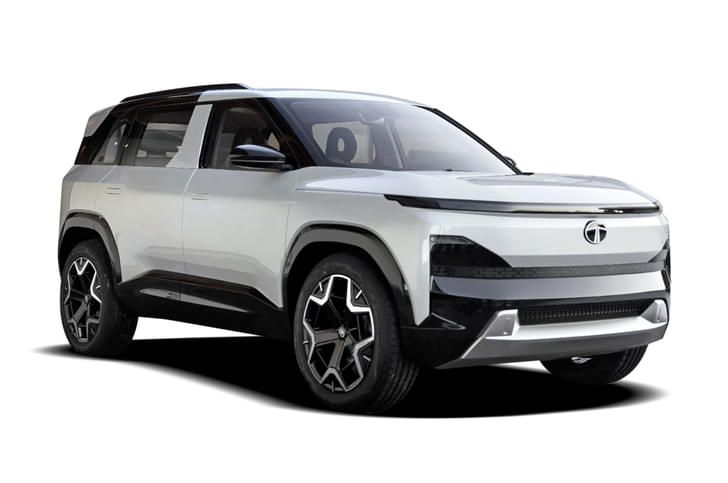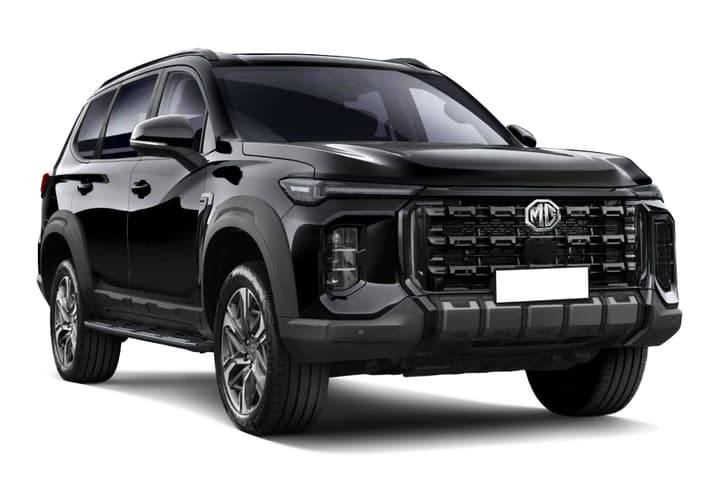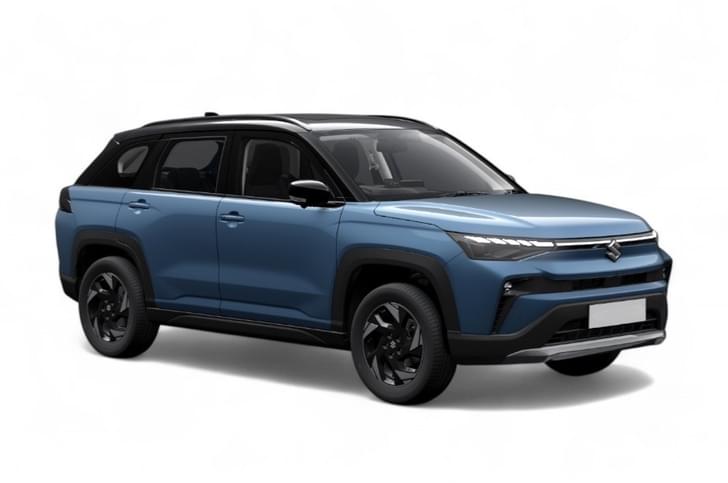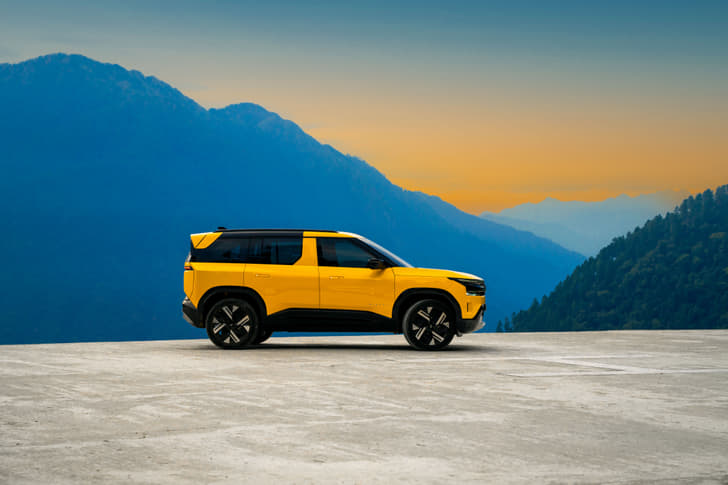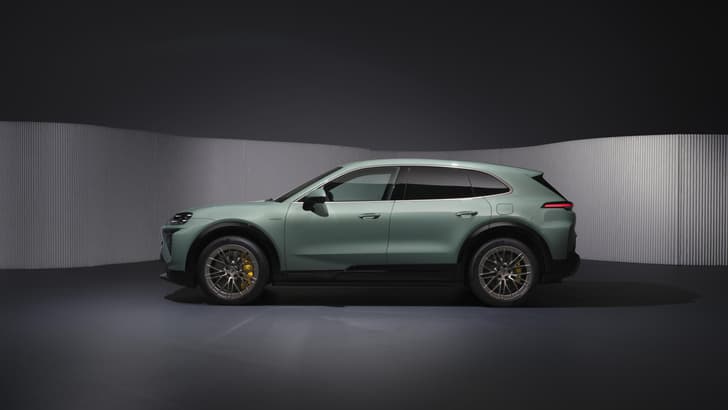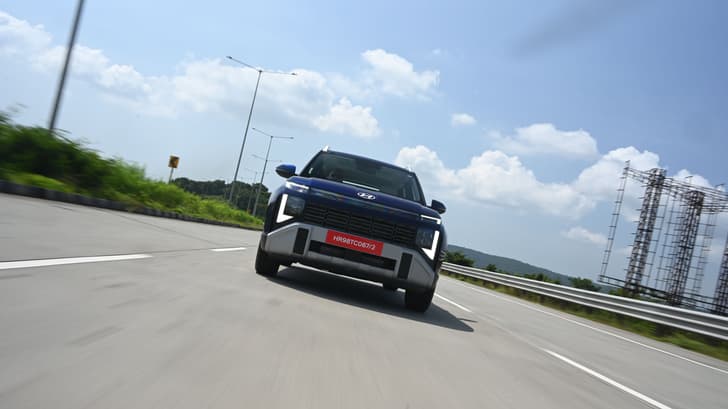Honda entered the compact sedan segment with the first-generation Amaze in 2013, and in the span of five years, it found over 2,50,000 buyers. The taxation policy, which gives a huge benefit to cars less than four metres long, played to Honda’s strength of packaging and space utilisation. Within the constraints of a four-metre length, Honda managed to carve out a surprisingly spacious cabin and boot, to make the Amaze a very competent and practical package. However, the first-gen model was based on the Brio platform which was built to strict cost targets. As a result, it didn’t feel as premium as some of its rivals, especially in the cabin, and though subsequent refreshes improved the product considerably, it never felt upmarket enough for the price. Lessons learned, Honda went back to the drawing board for the second-generation Amaze and developed it grounds up. It’s no longer a Brio with a boot, but a fresh, all-new compact sedan.
What is it like?
Unlike the first-gen Amaze, the second-generation Amaze is built on an all-new platform, which will be a base for future models. That means it is ready to meet future crash safety regulations which will get much tougher in October 2019. To achieve the required crashworthiness, the whole body structure has been beefed up with thicker cross sections and stronger crumple zones. The good thing is that this hasn’t come at the cost of weight, and, in fact, is lighter by almost 40kg, thanks largely to the use of high-tensile steel, which is lighter and stronger than conventional pressed steel panels.
The Amaze has grown in every dimension and is longer, wider and taller than the outgoing car, while the wheelbase is a significant 65mm longer than before. Stretching the wheelbase immediately benefits cabin space but poses a challenge when it comes to design. “With a longer wheelbase, the C-pillar goes back a bit, which makes it tricky to integrate with the roofline and the boot,” says product leader Hirochi Yamaguchi. To get a cohesive and seamless shape, Honda has tapered the roof towards the rear, for it to flow smoothly into the C-pillar.
Overall, the design of the new Amaze is quite striking and nothing like the previous car's. The buff and vertical nose looks quite unconventional and could split opinion, but what works to make the Amaze look wider than it is, is the thick, signature chrome grille bar and the stretched, flat bonnet. In fact, the extra width (the track too is increased by 17mm front, 25mm at the rear) makes the 175/65 R15 tyres (which now sit on larger 15-inch alloys) look a size too small. The sides are a lot cleaner and get a single character line which looks neat but not quite as distinctive as the prominent two slashes across the earlier Amaze’s flanks.
At the rear, the Amaze is significantly different and looks really premium, with the chunky C-shaped tail- lamps giving it a mini-Civic look.
Like before, there’s a 90hp, 1.2-litre, four-cylinder petrol and a 100hp, 1.5-litre, four-cylinder diesel engine, mated to either a five-speed manual or an automatic (CVT). The diesel-CVT makes 20 percent less power compared to the manual, and this has been done to keep preserve the life of the transmission as well as ensure smoother performance. “CVT’s don’t like too much torque, which can result in belt slippage and we had to reduce it to keep a safety margin,” said Yamaguchi.
In addition, Honda has made several enhancements to improve efficiency, as well as reduce the vibrations and harshness levels in the diesel.
What are they like to drive?
Honda’s 100hp, 1,498cc, four-cylinder diesel behaves just like before, and remains very responsive to accelerator inputs. Power builds in a very linear manner, and although the boost comes in at around 1,800rpm, there’s ample power available even below that – so those used to upshifting early in diesels won’t have to deal with delayed power delivery. Performance remains strong yet smooth at mid revs until about 3,800rpm, after which it dulls down; although it revs until 4,300rpm. Even at high revs though, this engine doesn’t sound unrefined. This time around, for the diesel, Honda has used an engine undercover, changed the engine block design and made several modifications to filter out vibrations and noise. While the diesel drone is still present in the cabin, that clattery, rattling sound from the engine is eliminated. The five-speed manual gearbox is one of the best in the business with short and precise throws, while the clutch is fairly light to use.
The talking point of this new Amaze is the diesel CVT that’s a segment first and a first for Honda too. Power and torque have been reduced by 20 percent to 80hp and 160Nm, but the good news is that the Amaze doesn’t drive like it’s got such a deficit. In fact, off the line, you’d be hard-pressed to feel the reduced power. The CVT works brilliantly and complements this engine’s responsive nature very nicely.
Performance is brisk and effortless, as the CVT keeps the engine spinning right in the meat of its powerband. It works very smoothly and even when driven aggressively, it holds the revs at 3,700rpm, as the speeds increase rapidly. Despite being down on power compared to the manual, there wasn’t a point where the Amaze diesel felt shortchanged. Yes, there is a bit of rubber band effect, and the engine does drone when you’ve got it wound up to max revs, but the minute you ease off, the CVT lets the engine revs drop down to let the Amaze cruise happily and without fuss.
The petrol is the familiar 90hp, 1.2-litre engine and there's hardly any change in the way it drives. As long as you're gentle with the accelerator, the engine rewards users with smooth and refined performance in the city. Unfortunately, the weak mid-range of this engine is also carried over, which calls for frequent gear changes to get most of out it. This lack of mid-range punch is most noticeable in fourth gear when overtaking on the highway. Floor it in fourth and the engine bogs down; so you have to drop down to third constantly to get a move on. Part of the problem is because Honda has used taller fourth and fifth gear ratios in the interests of fuel economy, which on the petrol-manual is improved by around 10 percent to 19.5kpl.
Like most Honda petrols, this 1.2 motor, too, loves to be revved. There’s a prominent spike in performance post 2,500rpm and then again over 5,500rpm, and it’ll rev all the way until 6,600rpm. Although the five-speed manual is easy to drive, there’s also a CVT option, which works seamlessly in the city. However when driven hard, it has a tendency to hold the revs at higher rpms, making the engine feel a bit stressed, and this becomes more pronounced when the car is loaded with passengers and luggage. The petrol CVT also gets paddleshifters to change ratios manually, in addition to the Sport mode on the lever, while the diesel misses out on paddles but gets a low gear mode ‘L’ instead, where the car remains in the lowest possible ratio, which is particularly useful on inclines.
Ride comfort is one of the key strengths of this Amaze. It handles rough roads very capably and doesn’t toss around passengers on broken roads. Body movements are very well controlled too. If there was one concern though, it was that, with four passengers and luggage, the rear of the car bottoms out (just like the older Civic) on speed breakers, as a result of the soft rear suspension and long wheelbase. The steering has a bit of vagueness around the centre position but it remains well-weighted and precise as the speeds build. Overall stability is fantastic and the new Amaze has a secure, planted feel of a bigger car. It dives into corners with a new-found confidence too; so this family car can still be fun around the bends and curves.
What is it like inside?
This new-gen Amaze isn’t just grown up on the outside; it’s a significant step up on the inside too – be it space or appeal. The two-tone dashboard might seem a bit busy with lots of design elements, but, more importantly, offers a big jump in the quality. The plastics though not ‘soft-touch’ are nicely textured and have a premium feel. Certain bits like the steering controls, climate control knobs and buttons are superbly finished and the meaty steering wheel is great to grip. A huge improvement here is the front seats, which now get adjustable neck restraints and high-quality fabrics. The redesigned seats are well-contoured and offer good support. In fact, it's safe to say that these are amongst the comfiest seats in a compact sedan. The touchscreen is smooth to operate and it is easy to navigate through the various menus, but the hard buttons on the side are too tiny and feel flimsy to operate. Also, we wish Honda offered a good old-fashioned rotary knob for the volume. The Amaze comes with both Apple CarPlay and Android Auto in addition to satellite navigation, which is now de rigueur in today’s competitive market.
The outgoing car was very spacious at the back and this new one carries forward that strength. The back seat is very comfortable with a comfy recline angle and ample thigh support. Legroom is huge too for a car of this size, and because the front seatbacks are scooped in, knee room is ample. It does have certain flaws though like the headroom isn’t generous and six-footers could brush the roofliner. Also, the fixed neck restraints are quite useless for taller passengers, in the event of a rear-end collision.
Although the new Amaze misses out on rear air-con vents, the air-con compressor has been upgraded to larger capacity units, and yes, it cools the cabin very rapidly. In terms of equipment though, the top variants feature cruise control, keyless entry/go, tilt steering adjustment, touchscreen infotainment system, climate control and the petrol-automatic gets paddleshifters. Safety kit like ABS, EBD, dual airbags and Isofix child seat mounts on the rear seat are standard across the range.
What’s nice is that there are several well-shaped storage areas across the cabin, including bottle holders in the doors. The boot is now larger by 20 litres, taking the total cargo capacity to 420 litres, which is segment-best.
Should I buy one?
The new Amaze is drastically different from its predecessor and ‘grown-up’ is the best way to describe it. It’s not just the overall dimensions, but in key areas like refinement, ride quality and overall space and comfort that the Amaze has truly stepped up its game. The ace up its sleeve is the diesel-CVT, which performs remarkably well, and combines convenience and efficiency like no other automatic. The downside is that the diesel-CVT is not available in the top VX variant, so the touchscreen is something you’ll have to make do without. Can the new Amaze take the fight to the segment-ruling Suzuki Dzire? Launched at Rs 5.60-8.00 lakh for the petrol and Rs 6.60-9.00 lakh for the diesel, the Amaze is priced at par against its main rival, the Maruti Suzuki Dzire. Finally, there’s a strong alternative to the Dzire.















